Drill beats are all about gritty basslines, haunting melodies, and aggressive rhythms that demand attention.
So, if you want to learn how to make drill beats, you’ll need to master these elements, plus be able to create intricate drum patterns and throw in the signature sliding 808s.
Luckily, you’ve come to the right place because we’re breaking down everything you need to know about how to make drill beats, like:
- Choosing the right BPM for a drill-type beat ✓
- Selecting dark, moody sounds and instruments ✓
- Laying down ominous drill melodies ✓
- Incorporating sliding 808s for a more menacing sound ✓
- Programming rapid hi-hat patterns ✓
- Punchy snare and clap patterns ✓
- Adding kicks and unique percussion ✓
- Structuring your drill beat effectively ✓
- Using breakdowns and beat switches creatively ✓
- Pro tips about UK drum patterns ✓
- Much more about how to make drill beats ✓
After this article, you’ll be able to make drill beats that really hit hard and successfully capture the intense, moody vibe that defines the genre.
Plus, your tracks will stand out in the crowded drill music scene and really make an impact on your listeners (like a true professional).
So, let’s dive in so you can make a drill beat right away…
Table of Contents
Understanding Drill Music: Origins and Characteristics

Drill music originated in Chicago in the early 2010s and quickly spread to the UK, where it developed its unique style.
UK drill, characterized by dark, menacing sounds, aggressive beats, and gritty lyrics, took the genre to new heights.
The key elements that define drill music include:
- Sliding 808s
- Fast-paced hi-hat patterns
- Haunting drill melodies
It also typically features orchestral instruments like strings or bells as well.
As a producer, mastering the distinct sound of drill music is essential to creating captivating drill beats that stand out in the industry.
Don’t worry, we’ll be breaking down everything in detail so you can really nail this unique style and learn how to make drill beats that aren’t basic or boring.
How to Make Drill Beats: Step-by-Step
To make a drill beat that instantly captivates, you just need to focus on each component that makes up the genre. So, let’s start by breaking down exactly how to make drill beats step-by-step. This way, your drill beats will have that raw energy and emotion that drill music is famous for.
-
Choosing the Right BPM

When you’re learning how to make drill beats, it all starts with choosing the right BPM because this is key to capturing the authentic energy and vibe of a drill beat.
It typically ranges from 140 to 150 BPM…
However, subtle differences within this range can drastically change the feel of your track, so make sure to play around with it a little bit.
For example, setting your project tempo to 142 BPM can create a perfect balance between urgency and groove, ideal for UK drill beats.
If you aim for a more intense, faster pace, push it up to 145 BPM, which works well with rapid hi-hat rolls and aggressive kicks.
On the flip side, dropping to around 138 BPM can give your beat a heavier, more laid-back feel 一 reminiscent of early Chicago drill.
Simply adjust the BPM according to the mood you want to create, and always experiment within this range to see how it affects the overall vibe of your drill beat.
This way, you’ll really nail down the specific style/vibe you’re going for.
-
Selecting Sounds and Instruments
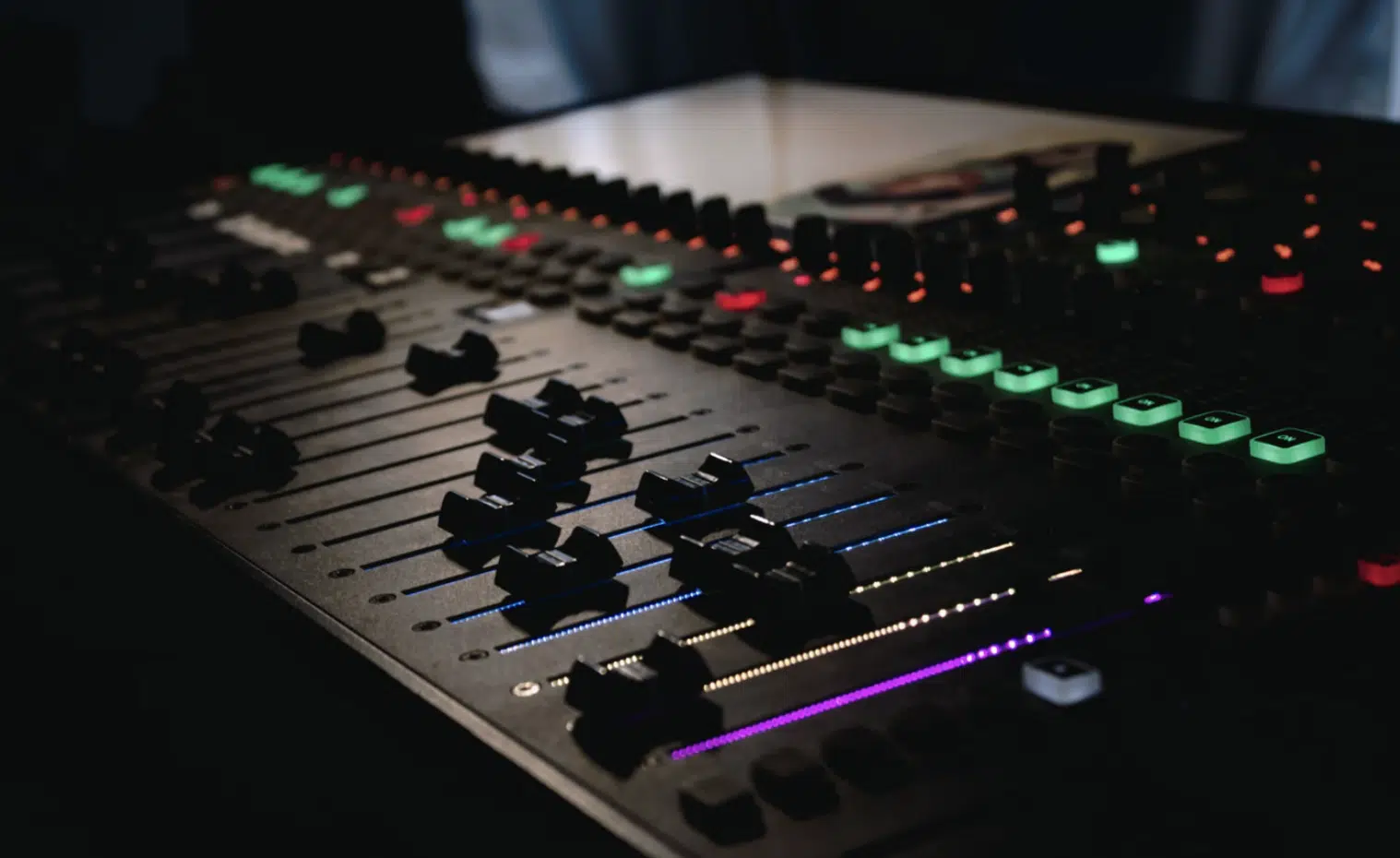
When it comes to drill beats, it’s all about selecting sounds and instruments that give off that dark, ominous feel.
So, start with a base of orchestral sounds like strings, brass, and piano, which are often detuned or processed to sound gritty and eerie.
For example you can use a heavily processed string sample to play a dissonant chord progression in the background, which will give a dark undercurrent to the beat.
Then, layer this with a bell or a plucked instrument that plays a sparse, haunting melody on every third beat 一 adding tension and suspense.
Also, make sure to incorporate deep, resonant 808s that slide between notes, and choose drum sounds that are punchy and hard-hitting, like a snappy snare and a sharp clap.
It’ll help you ensure that each element contributes to the track’s menacing soundscape.
The right combination of instruments and sounds will give your drill beat the distinctive edge it needs to stand out.
Pro Tip
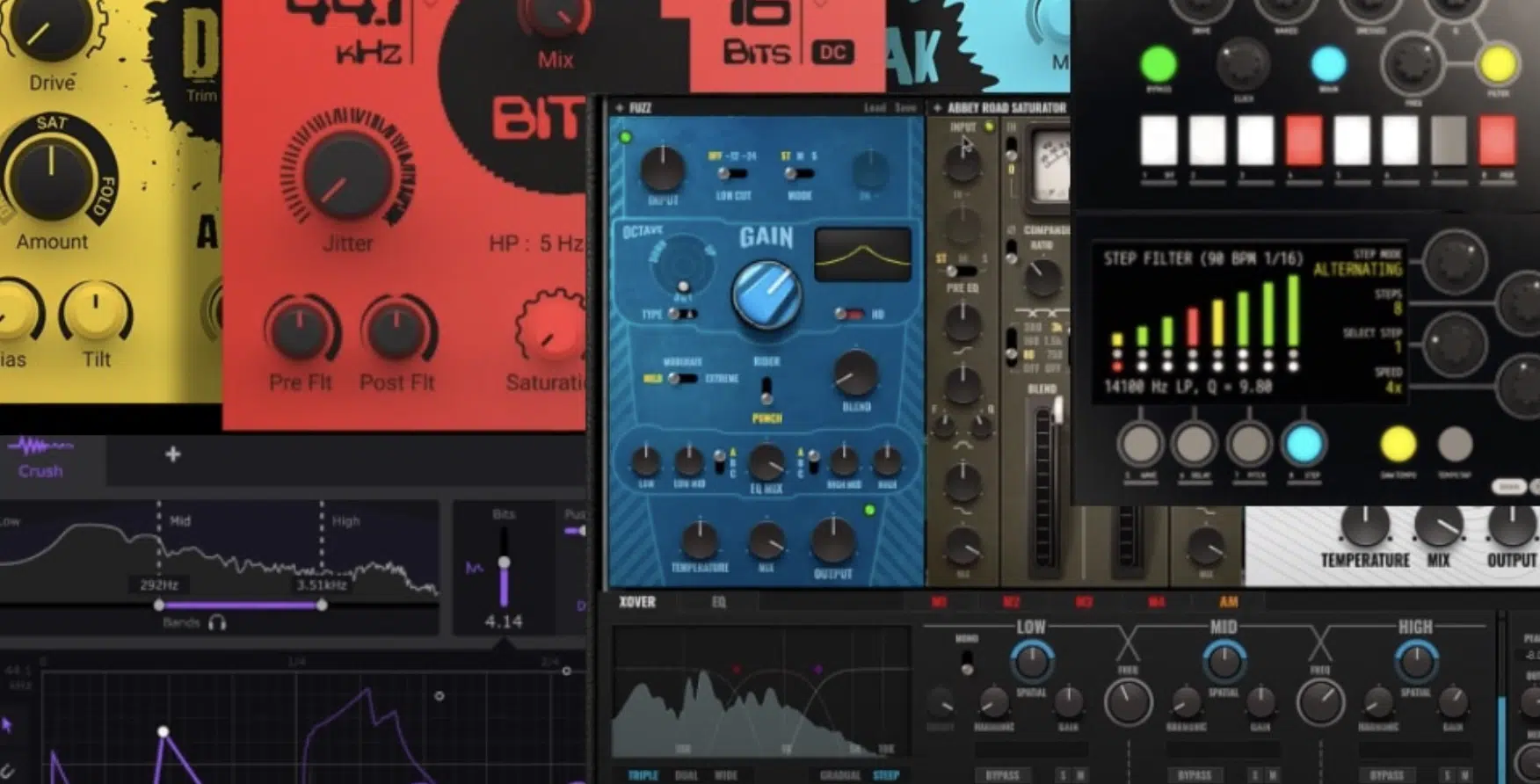
Try using a detuned piano for your main melody, applying a bitcrusher or tape saturation plugin to give it a rough, degraded texture.
Pair this with a low-pass filtered synth pad that subtly swells and fades to fill out the low end without overpowering the 808s.
Remember, when selecting drum sounds, choose a snare that has a sharp attack and a long reverb tail because it’ll help cut through the mix and add depth to the rhythm.
Also, experiment with layering one-shots, like a metallic hit or a distant gunshot sample, on the off-beats to add a unique, unsettling texture to your drum pattern.
It’s one of my favorite sounds to play around with when I’m knocking out drill beats, so definitely try it out.
-
Creating a Dark and Moody Melody
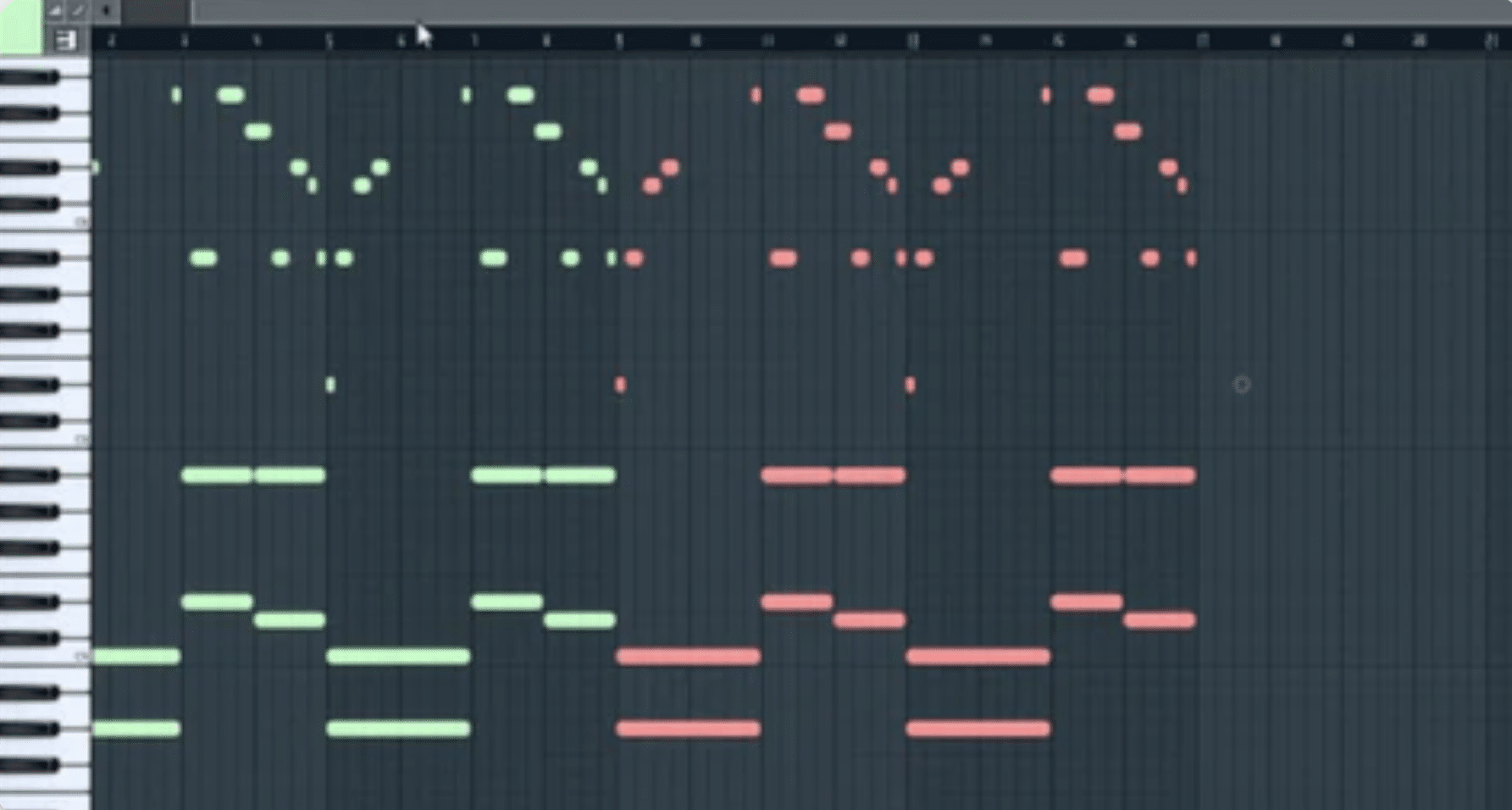
If you want to learn how to make drill beats that sound professional, you have to nail down a dark, moody melody, so start by selecting a minor scale.
This could be A minor or D minor, which naturally evokes a somber, ominous tone (it’s all about that sadder vibe right now).
Use a detuned piano or a dark, low-pitched synth to play a simple, repetitive melody that anchors the beat, focusing on the root notes of the scale.
This will help you achieve/maintain a consistent, menacing atmosphere.
For example, you might play a descending three-note pattern on a piano, hitting the root note on the first bar and allowing the notes to echo into the second bar.
You can enhance this by adding a secondary melody with a plucked string or bell that plays on the fourth beat of each bar 一 creating a call-and-response effect that adds even more depth and complexity.
Don’t forget to throw in pitch bends or slides on the melody to create an unsettling, tension-filled vibe so your drill beat keeps the listener on edge.
NOTE: When you’re learning how to make drill beats, remember to play around with vocal samples.
For example, you can chop and pitch-shift a vocal sample to create eerie stabs or loops that hit on the third or fourth beat.
It’ll add an extra layer of intensity and style texture to your music.
Side note, if you want the sickest vocal samples in the game, we’ve got you covered.
-
Incorporating Sliding 808s
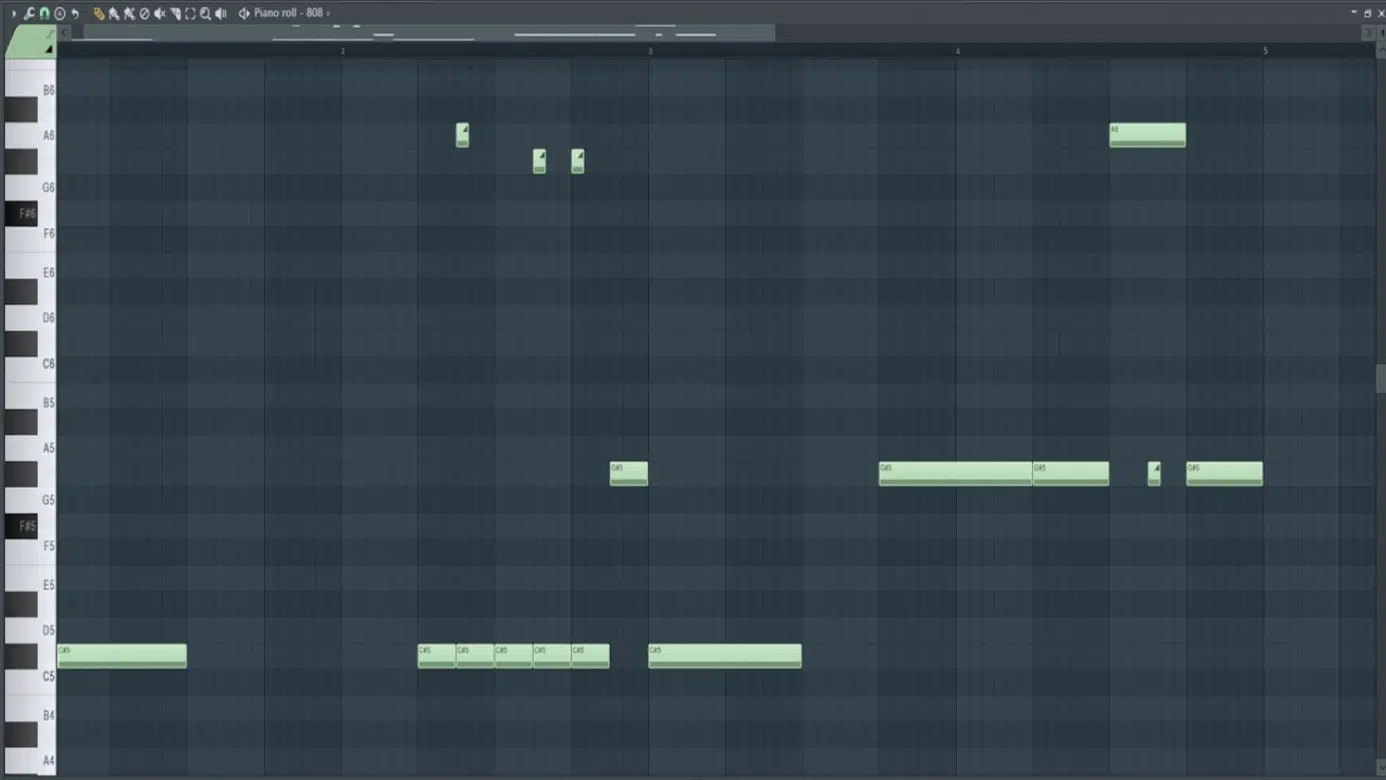
Sliding 808s are one of the most signature elements of drill music, giving the beat that heavy, rolling bass notes that literally defines the genre itself.
To create sliding 808s, start by selecting a deep 808 sample and tune it to match the root notes of your melody, typically in a minor key like A minor or G minor.
In your DAW (like FL Studio), use automation to pitch bend the 808s between notes, creating a smooth slide that hits on the second and fourth beats of the bar.
For example, program the 808 to slide from a low C to a G over the second bar 一 adding a powerful, menacing undertone to your drill beat.
This technique not only adds depth to your bassline but also complements the dark, moody vibe of the track to make your drill beats hit super hard.
Pro Tip
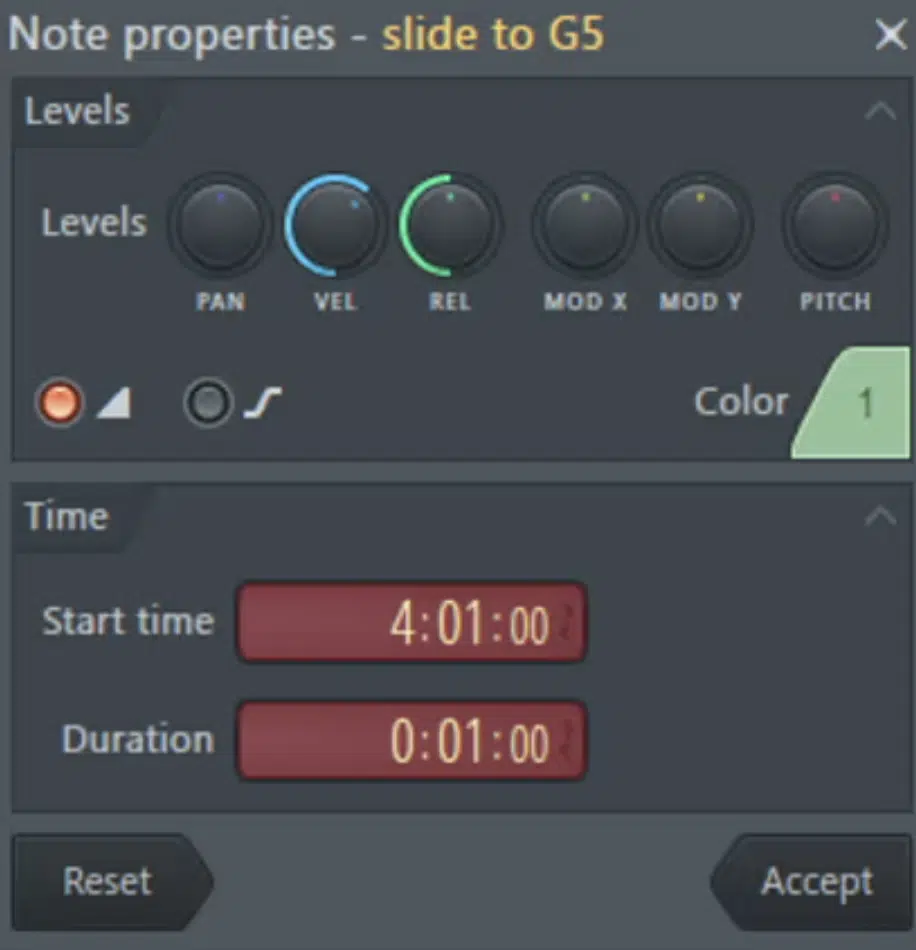
Start by drawing in your 808 notes in the piano roll, then use your DAW’s pitch automation or glide function to create the sliding effect.
Make sure the 808s are slightly longer than the note they are sliding into, which helps the slide feel smoother and more natural.
You can also layer multiple 808s, each with different glide times, to create complex sliding patterns that move fluidly between the beats.
For an even more dramatic effect, apply sidechain compression to the 808s with the kick, so the bass ducks slightly every time the kick hits,
This will create a pumping rhythm that makes the bassline feel more dynamic.
Also, try adding a subtle distortion or saturation to the 808s to make them stand out more in the mix, giving your drill beat that extra punch and grit that listeners crave.
-
Programming Drill Hi-Hats
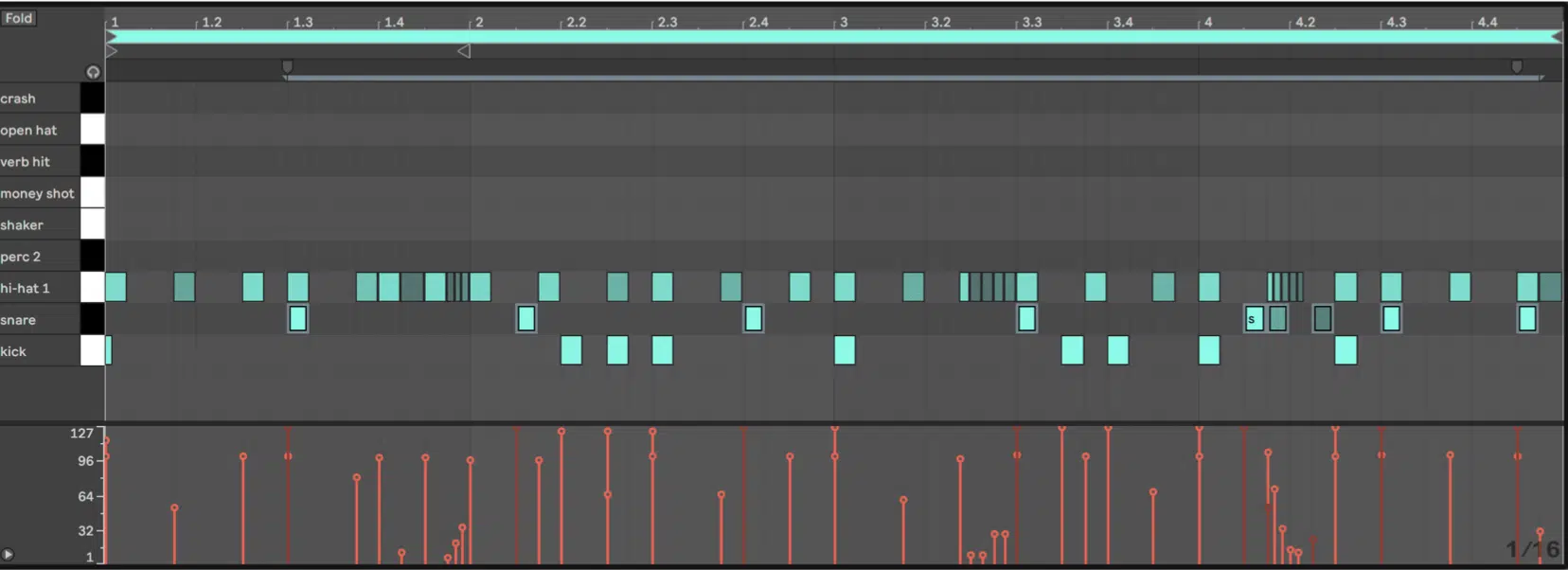
Hi-hats in drill beats often feature fast, intricate patterns that add to the genre’s tense and aggressive feel.
This is super important to know when you’re learning how to make drill beats, so pay close attention.
Start by programming a hi-hat pattern at double or even triple speed relative to the project’s tempo, typically around 140 BPM.
Use a combination of regular hi-hat hits on every beat and rapid rolls, especially on the third and fourth beats of each bar, to create a syncopated rhythm.
You can, for example, program a roll using 1/32nd notes that accelerate into the fourth beat to enhance the beat’s intensity.
Adjust the velocity of each hi-hat hit to add a more dynamic, human feel 一 making the pattern sound less robotic and more engaging.
Pro Tip

Take it to the next level by adding ghost notes at lower velocities to create a more intricate rhythm, and use open hi-hats on off-beats to add movement.
Experiment with layering different hi-hat samples and using slight reverb or delay with short decay times to add depth without overwhelming the mix.
These tweaks will give your drill beat a polished, professional edge, elevating the rhythm and overall energy.
NOTE: A Tresillo rhythm is a syncopated three-beat pattern which you’ll commonly see when you’re going to make a drill beat. It can add a distinctive off-beat groove and rhythmic complexity (shown above).
-
Laying Down the Snare and Clap Patterns

In drill beats, the snare and clap patterns are super important when it comes to maintaining its signature off-beat, gritty rhythm.
Place the snare hits on the third beat of each bar, with an additional hit on the fourth beat of every second bar to create that classic drill rhythm.
Layer this with a clap that hits on the same beats but slightly delayed, adding a sharp, aggressive snap to the pattern.
For example, use a snare sample with a deep, reverb-heavy sound and a clap with a short, crisp attack to create a contrasting texture.
This combination will give your drill beat a hard-hitting, punchy rhythm that drives the new track forward.
It’s super simple, but it really leaves a lasting impact when you’re learning how to make drill beats.
-
Adding Kicks and Percussion
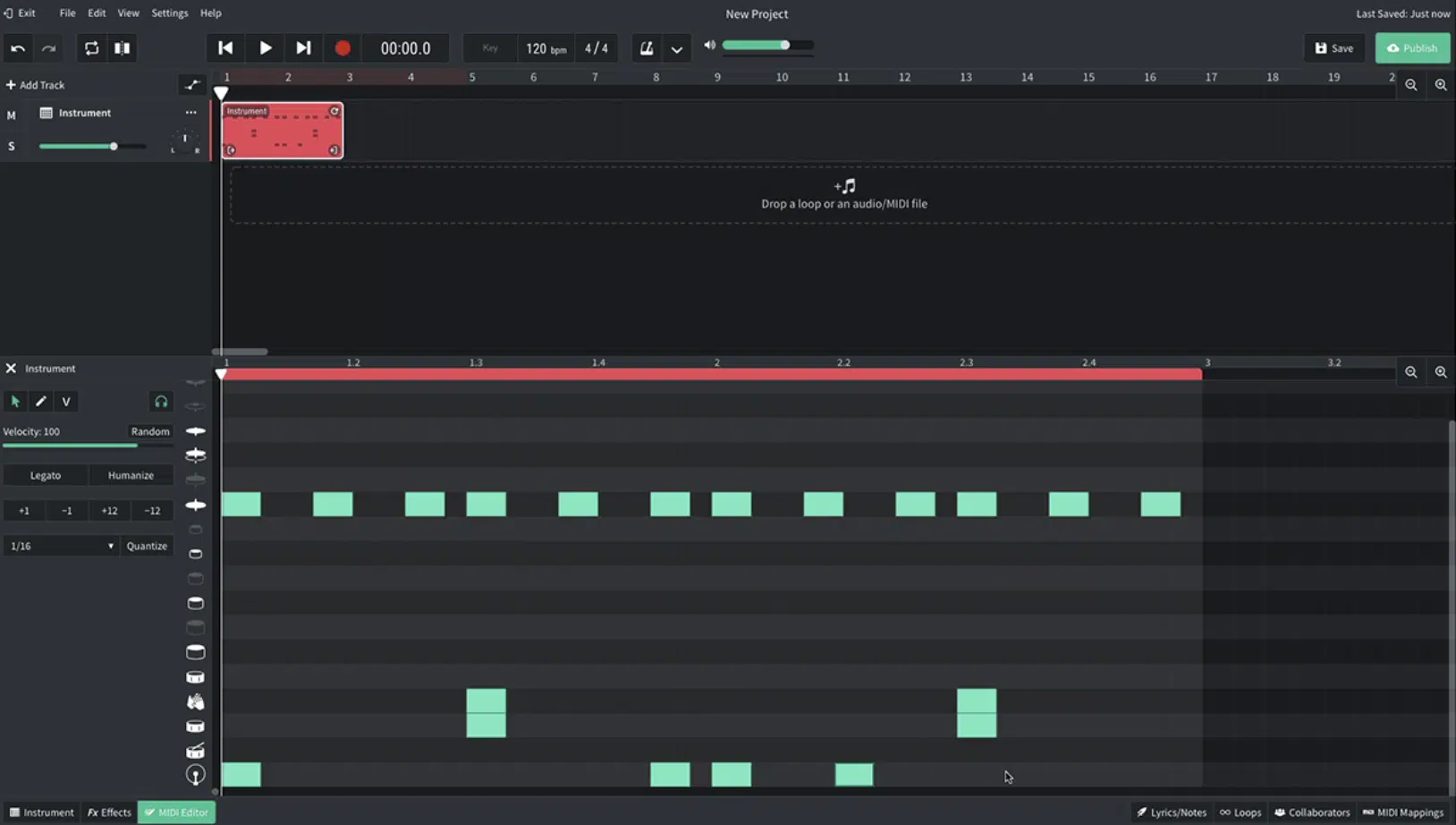
Kicks in drill beats are typically heavy and punchy, designed to cut through the dark, moody drill melodies and sliding 808s.
So, start by choosing a kick sample that has a deep, resonant thump, then program it to hit on the first and third beats of each bar.
This will reinforce the rhythm established by the snare and clap.
To add more kicks and variety, place additional kick hits on the second and fourth beats in every other bar to create a unique pattern that keeps the listener hooked.
Layer in percussion elements like rims, shakers, or even trap-inspired hi-hats on the off-beats to fill out the drum pattern and add texture.
For example, you might add a rim shot on the second beat of the second bar to accentuate the rhythm and create a syncopated, driving feel that drill beats are famous for.
Or, you could introduce a subtle tambourine roll or a light snare ghost note on the off-beats, adding a subtle yet intricate layer that enhances the groove.
Remember, when you’re learning how to make drill beats, these small details can make your drum pattern feel more dynamic/textured.
It’ll help your drill beat a professional, polished sound that really stands out.
-
Using Breakdowns and Beat Switches
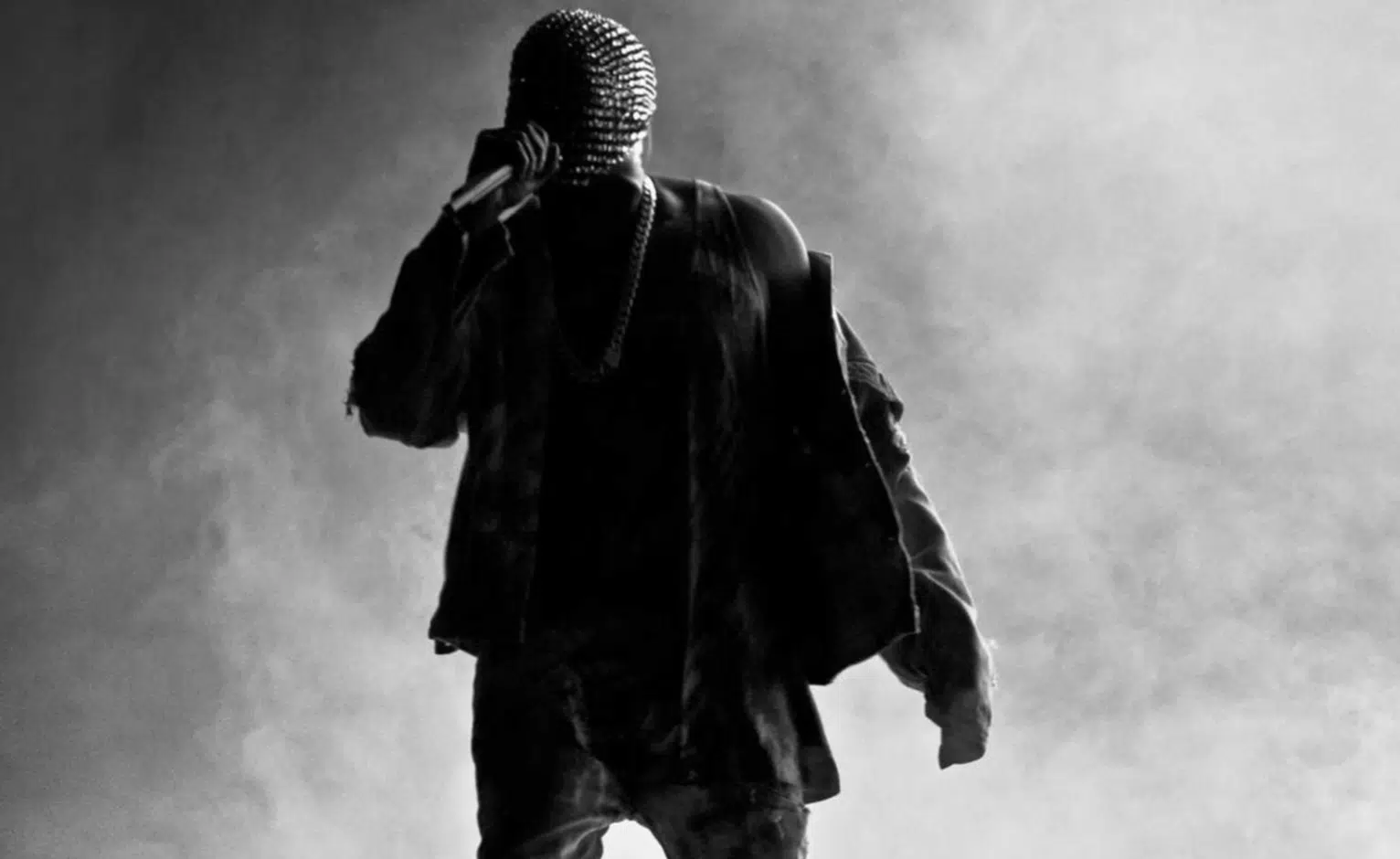
Breakdowns and beat switches are essential for adding variety and keeping your drill beats interesting and intriguing.
A breakdown typically involves stripping away most elements, leaving just:
- The melody
- A simple hi-hat pattern
- A low, rumbling 808 to build tension
For example, you might cut out the drill drums entirely on the fourth beat of the second bar 一 letting the melody and 808 carry the track into the next section.
Beat switches, on the other hand, involve changing up the drum pattern or melody halfway through the track, often with a change in the project tempo.
Or, introducing a new instrument track altogether.
For example, you could start your track with a dark, aggressive melody accompanied by hard-hitting drums and rapid hi-hat patterns at 140 BPM.
Midway through the song, introduce a beat switch by slowing the tempo down to 125 BPM and replacing the original melody with a more atmospheric synth pad or a melancholic vocal sample.
At the same time, alter the drum pattern by incorporating different percussion elements, such as adding swung rhythms or throwing in trap-influenced drum rolls.
This will add a unique twist/rhythm that people really respond well to.
Remember, when you make a drill beat, it’s like any other beat (hip-hop, trap, etc.), it’s all about switching things up and keeping your listeners engaged.
-
Mixing and Mastering
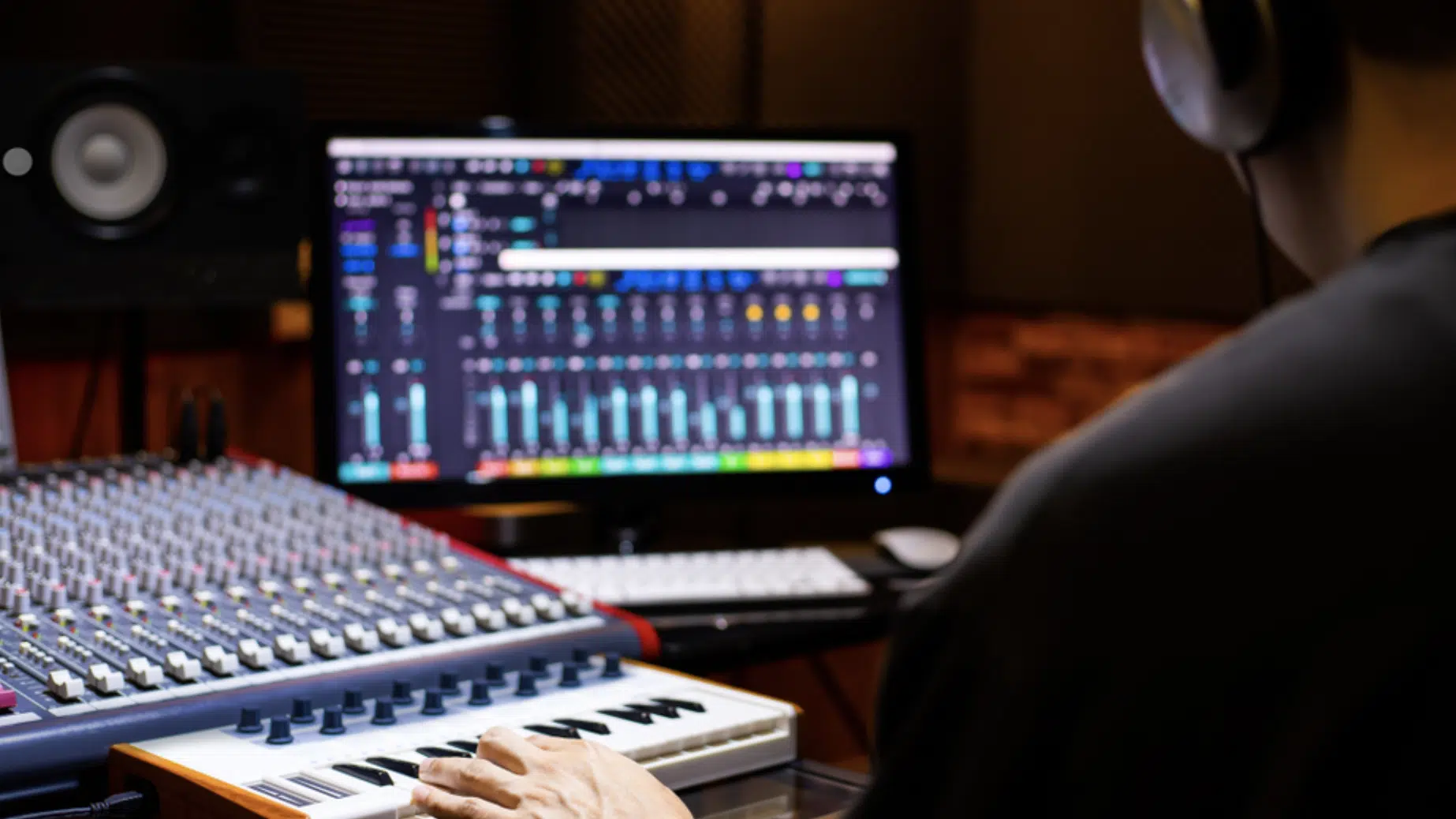
Mixing and mastering your UK drill beat (like any other genre) requires intricate tweaks and polishing to keep things professional.
Start by balancing the levels of all your elements, especially the 808s, kicks, and snares, so they don’t overpower each other, which is a huge mixing mistake.
For example, you might need to slightly lower the volume of the sliding 808s to prevent them from clashing with the kick on the first beat of each bar.
Use EQ to carve out space for each element…
Cut the low mids of your melody to let the 808s and kicks breathe, while boosting the high end of your hi-hats to make them crisp.
Add subtle reverb to your snare and claps to create depth, and finish with a limiter on the master track to make sure your drill beat is loud and punchy without distorting.
This process will help each sound sit perfectly in the mix, giving your beat the expert edge it needs.
Bonus: Advanced Drum Patterns
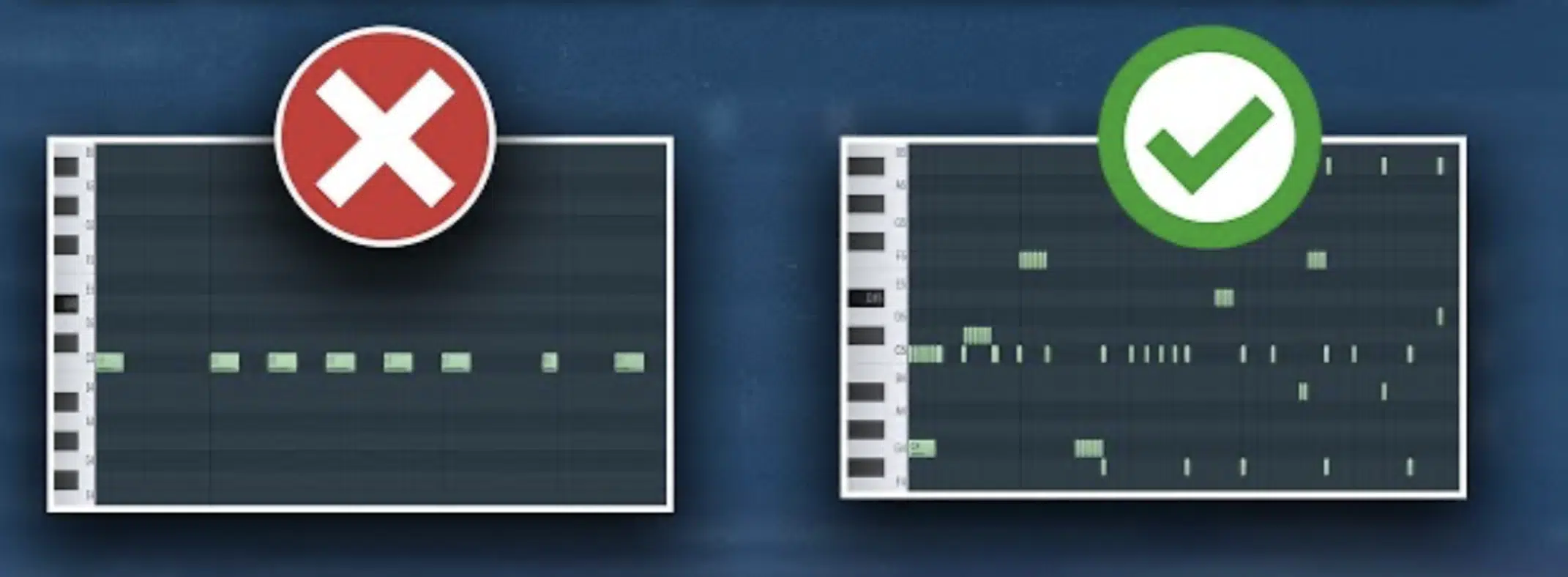
Creating advanced drum patterns is essential if you want to make a drill beat that stands out because it adds complexity and a unique rhythm.
Start by switching up the standard UK drill drum beat, such as placing ghost kicks on the second and fourth beats of every other bar to create a more unpredictable rhythm.
You can program a ghost kick with lower velocity on the second beat of the third bar, followed by a strong kick on the fourth beat of the fourth bar.
It’ll give your drum pattern that signature off-kilter drill rhythm.
Hi-hat rolls are another key element 一 use rapid 1/32 or 1/64 notes to create stuttered rolls, especially between the third and fourth beats, enhancing the rhythm’s intensity.
Alternating between open and closed hi-hats and incorporating percussion elements like rimshots/one shots or unconventional sounds will also add texture and movement.
By layering these elements and adjusting velocities, you can knock out a rhythm that’s both intricate and dynamic, making your drill beats seriously epic.
Side note, if you’re looking for the perfect drum kit for learning how to make drill beats, we’ve got you covered with these legendary drum kits.
To push your drum patterns even further, experiment with unconventional time signatures or polyrhythms within your drill beat.
While drill typically stays in 4/4, you can introduce a 3/4 or 6/8 time signature in a section of your beat to create a distinct shift in feel, adding complexity and intrigue.
I’ll say it once, I’ll say it again, when you’re learning how to make drill beats, it’s all about sticking to the generalized outline, but adding your own unique flair (so, experiment!).
How to Make Drill Beats: Final Thoughts
Learning how to make drill beats is all about mastering the gritty basslines, eerie melodies, and punchy drum patterns that define the genre.
By following all the steps (and tips) we covered today, you’ll be able to knock out drill beats that are not only captivating but also stand out over the competition.
If you’re super serious about taking your drill beats to the next level and learning how to make drill beats that will blow the mind’s of your listeners, you’ve got to check out this insanely valuable Free Drill Sample Pack.
It contains over 60 professional-quality drill samples, loops, and MIDI files, all designed to emulate the styles of legendary drill artists like Pop Smoke, CJ, and Stormzy.
Everything from thundering 808s and atmospheric loops to sharp snares and impactful drum patterns, all 100% royalty-free, can be found in this epic pack.
If you want to be on par with the greats, then this is your golden ticket.
So, when it comes to learning how to make drill beats, don’t ever forget to incorporate your own unique style/edge to them.
Your beats will not only hit hard but will also tell a story that captures the essence of drill music (while being true to you).
Until next time…







Leave a Reply
You must belogged in to post a comment.